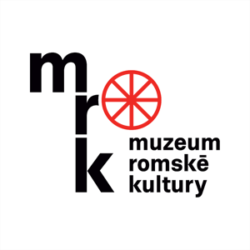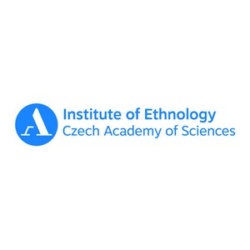Antónia Pustajová
Antónia Pustajová, born 1929, Čierny Balog, Brezno district
-
Testimony abstract
Antónia Pustajová described how the Roma got along well with the Jews in the village of Čierny Balog. For example, when the Roma did not have enough money to pay for their purchases, the Jewish merchant gave them credit, while the local Slovaks did not. The richest Jews in Balog were Artur Grosmír[1] and his wife, nicknamed Grosmírka, who had two girls close to Antónia’s age. She was especially friendly with their daughter Timka, with whom she sometimes even stayed overnight.
- [1] Probably Groswirth.
The Grosmír family were, like the other Jews, taken from the village one night by trucks and the Hlinka Guards began looting their home the next morning. Pustajová believed that if the Grosmír women had known that their property would end up in the hands of the Guards, they would have preferred to give it to the Roma, with whom the Jews sympathised. She also says that they cried for them.
After one raid on the partisans and their supporters in the adjacent hills, the Germans locked up the partisans and entire Roma families in the local large school. Pustajová described a plane dropping food aid in the hills near the hunting lodge where the Germans were concealed. Then they caught all those who came for the food.[1]
People from the village brought food to the partisans and the Roma trapped in the school. Antónia Pustajová's mother also cooked for them, even though they had little themselves, and Antónia brought food to the imprisoned Roma families. She didn't know the Roma, she didn't know where they were from. Once they let a boy of about seventeen help her with the soup containers. When they arrived back at the school with the food, the prisoners were already lined up outside, and a German man got the young man and Pustajová to line up as well. But the schoolmaster recognized her and called for help from the local priest, who managed to rescue Pustajová. She recalled that the young man could have escaped, and her mother encouraged him to do so, but he said that his parents and sisters were at the school and he belonged with them. He was sure they would go somewhere to work, but instead they were taken to a valley outside Čierny Balog, where some of them were shot and others burned to death in a shepherd's hut.[2] Antónia Pustajová's husband had to help dig the mass grave.[3]
- [1] While combing the forests in the rebel territory around Čierny Balog, tank grenadiers of the 18th SS Panzer Grenadier Division “Horst Wessel” intercepted 40 rebel soldiers and Roma families fleeing east from the village of Neresnica (now part of the town of Zvolen). (eds.)
- [2] One group of prisoners was taken to the Jergov Valley, where on 14 November 1944 all the men were shot and the women were locked in a hut, which they doused with petrol and set on fire. A second group met the same fate the following day near the settlement of Vydrovo. (eds.)
- [3] The 1944 tragedy in Čierny Balog, in which about 60 Roma (most likely Olah Roma) who had temporarily camped in the adjacent woods were murdered, is described in detail in Arne B. Mann, Význam spomienkového rozprávania pre výskum dejín rómskeho holocaustu (The importance of memory narratives for research on the history of the Roma Holocaust), Romano džaniben 2/2013, 37-52.
How to cite abstract
Abstract of testimony from: VAGAČOVÁ Ingrid, FOTTA Martin eds. Rómovia a druhá svetová vojna, Čítanka. Bratislava: Nadácia Milana Šimečku, 2006. ISBN 80-89008-20-8, 123-124 (slk), 132-133 (rom). Testimonies of the Roma and Sinti. Project of the Prague Forum for Romani Histories, https://www.romatestimonies.com/testimony/antonia-pustajova (accessed 12/5/2025) -
Origin of Testimony
The interview with Antónia Pustajová was recorded in the late 1990s as part of the Milan Šimečka Foundation project entitled “The Fates of Holocaust Survivors”. It was conducted in Slovak and recorded on camera. The transcript has been cut down, slightly edited and printed alongside the Slovak original in a translation into the Romani language. An excerpt from the interview with Antónia Pustajová is also on the attached DVD in the section Zostrih svedectiev (footage 21:40-25:43).
-
Where to find this testimony




